Dosing Light Responsibly
In red and near-infrared light therapy, the exposure time is the dose, and the light intensity or optical energy is the medicine.
Customer Review 5.0
Automated Consistent Dosing
Research-Inspired Benefits
3 Year Warranty
60-day 100% Risk Free Trial
What Is Red & Near-Infrared Light Therapy
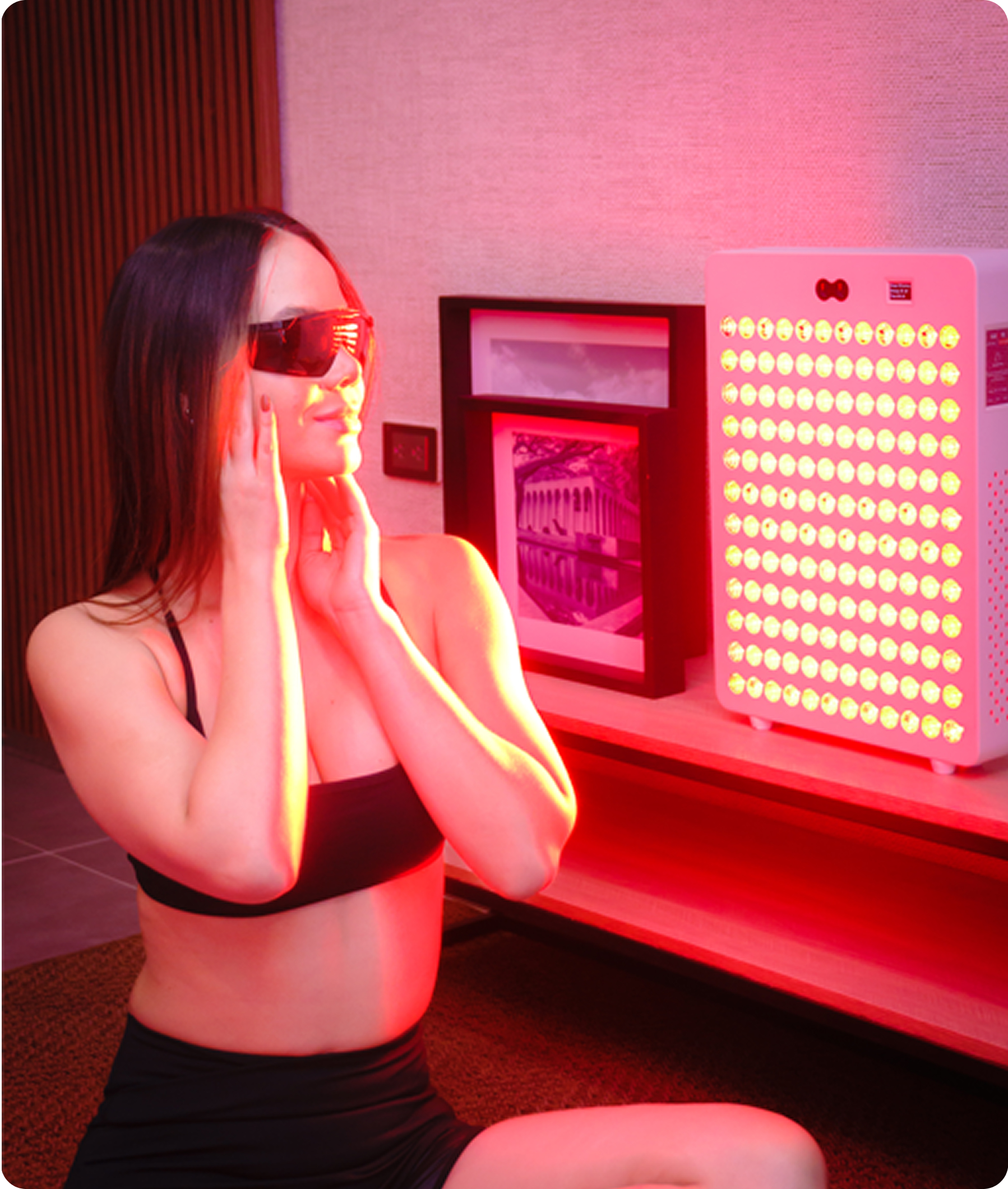
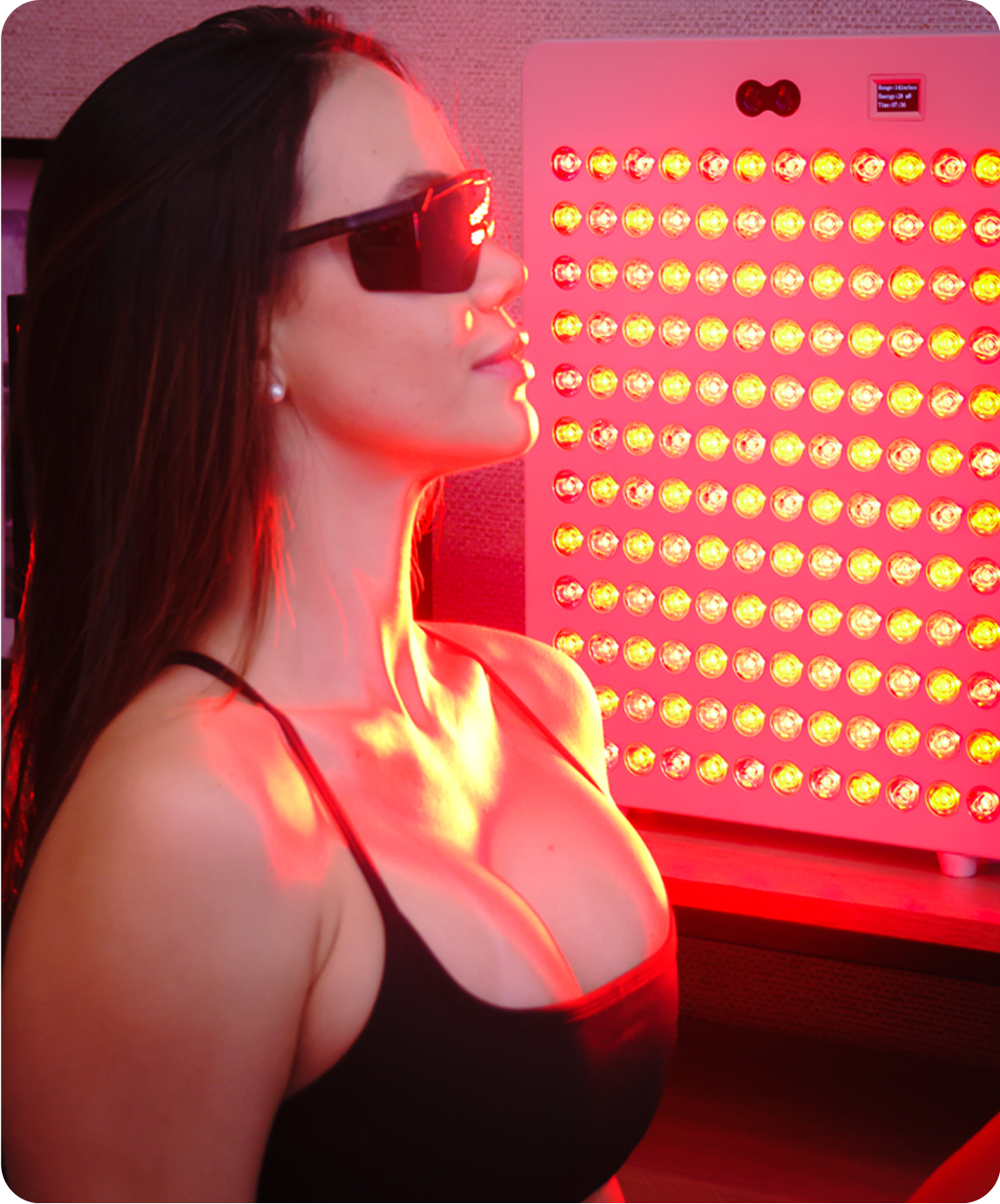
“If you’re irradiating a big area like the whole body, right? 10 or 20 milli watts per square centimeter is high”
-Dr Michael Hamblin
World leading researcher on photobiomodulation
Luxxe: Advocating for Intelligent, Responsible Dosing
At Luxxe, we believe light therapy should be powerful—but never excessive. More isn’t always better. While many companies chase ever-higher intensities, Luxxe takes a scientific, nature-aligned approach, delivering precise, therapeutic doses based on clinical research and principles of responsible photobiomodulation (PBM).
Why Responsible Dosing Matters:
Bi-Phasic Response: Red light therapy follows a U-shaped curve—too little or too much light reduces effectiveness. Luxxe targets the optimal range to maximize benefits without overstimulation.
Inhibitory Response: Excess intensity can trigger adverse effects. Our smart system helps avoid overdosing, supporting safe and consistent progress.
Cumulative Response: Results build over time. That’s why Luxxe prioritizes consistency and accuracy, not brute force.
Light Like Nature Intended
Inspired by research from Daniel Barolet, Luxxe mimics sunlight’s optimal intensities (30–40 mW/cm²), using Smart Distance Dosing™ for natural, precise delivery every time
Precision You Can Trust
As Dr. Michael Hamblin said: “LLLT is the medicine and the dose.” Luxxe is the only system that auto-adjusts both—irradiance and time—based on real clinical studies. We don’t guess. We guide.
Heat Is Not the Goal—Energy Is
More Isn’t Always Better
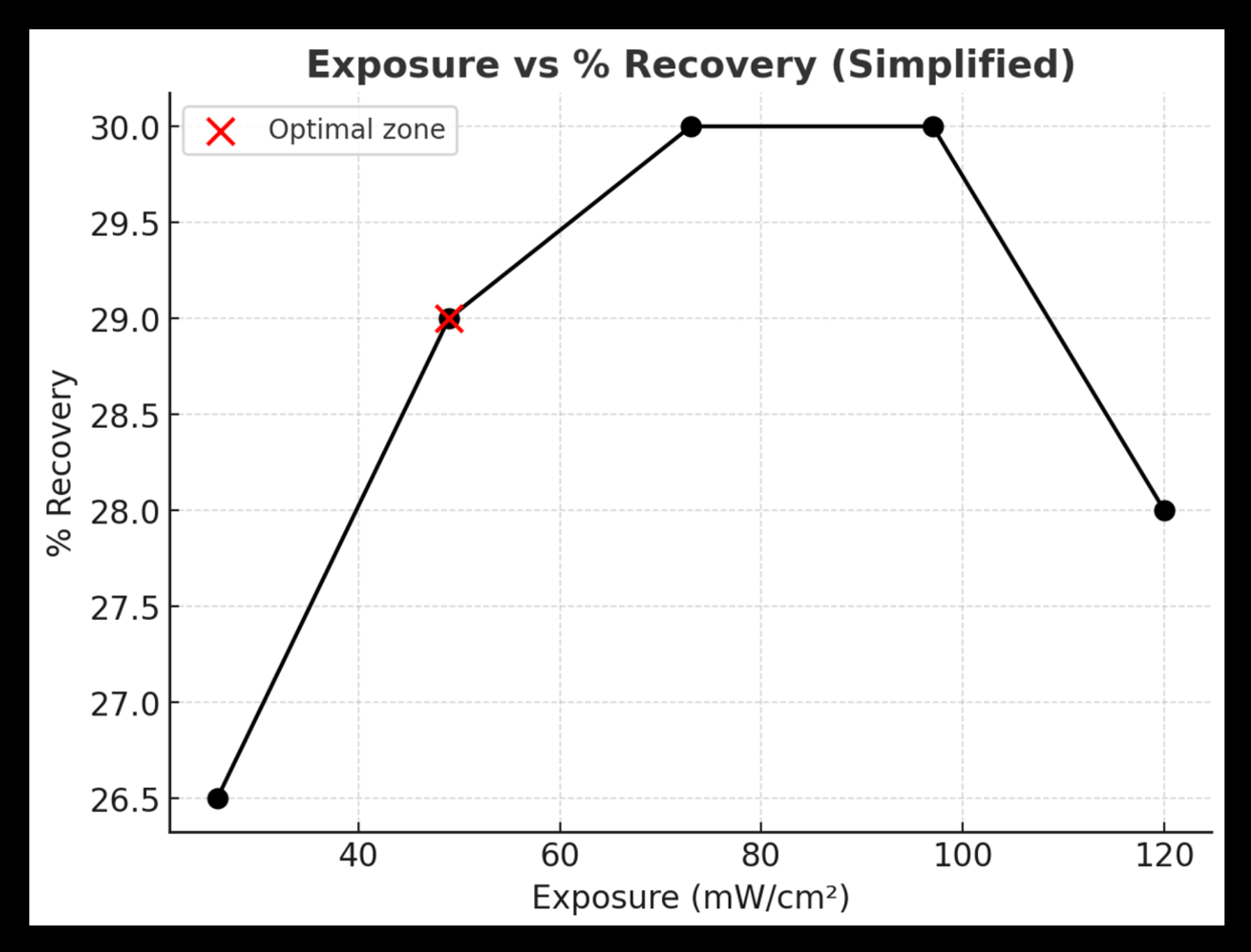
In the chart above, we clearly see that the greatest percent of recovery improvement occurred midway at the 49 milli watt per square centimeter (mW/cm^2) level and not at the highest intensity of 120 mW/cm^2.
Also, notice the dose chart below shows the corresponding energy density of 8.8 Joules per square centimeter (J / cm^2), which was closer to the lower end of the dose range rather than to the higher end of the dose range, produced the greatest amount of recovery in the test subjects.
Smart Dosing Isn’t Optional—It’s Essential
Research proves that in light therapy, dose matters.
“Too much light may be as ineffective—or harmful—as too little.”
— Huang et al., 2011
Think of Light Like Wine
A glass a day = benefits.
A bottle all at once = not so much.
That’s how photobiomodulation works—timing and intensity matter.
Studies show the sweet spot is lower irradiance (<50 mW/cm²) and natural dosing, not max power.
Luxxe Makes Dosing Effortless
Our IntelliDose™ tech automatically adjusts light intensity and time—just like nature intended. No guesswork. No overdosing. Just smart, safe, effective therapy. We bring the science—and help you use
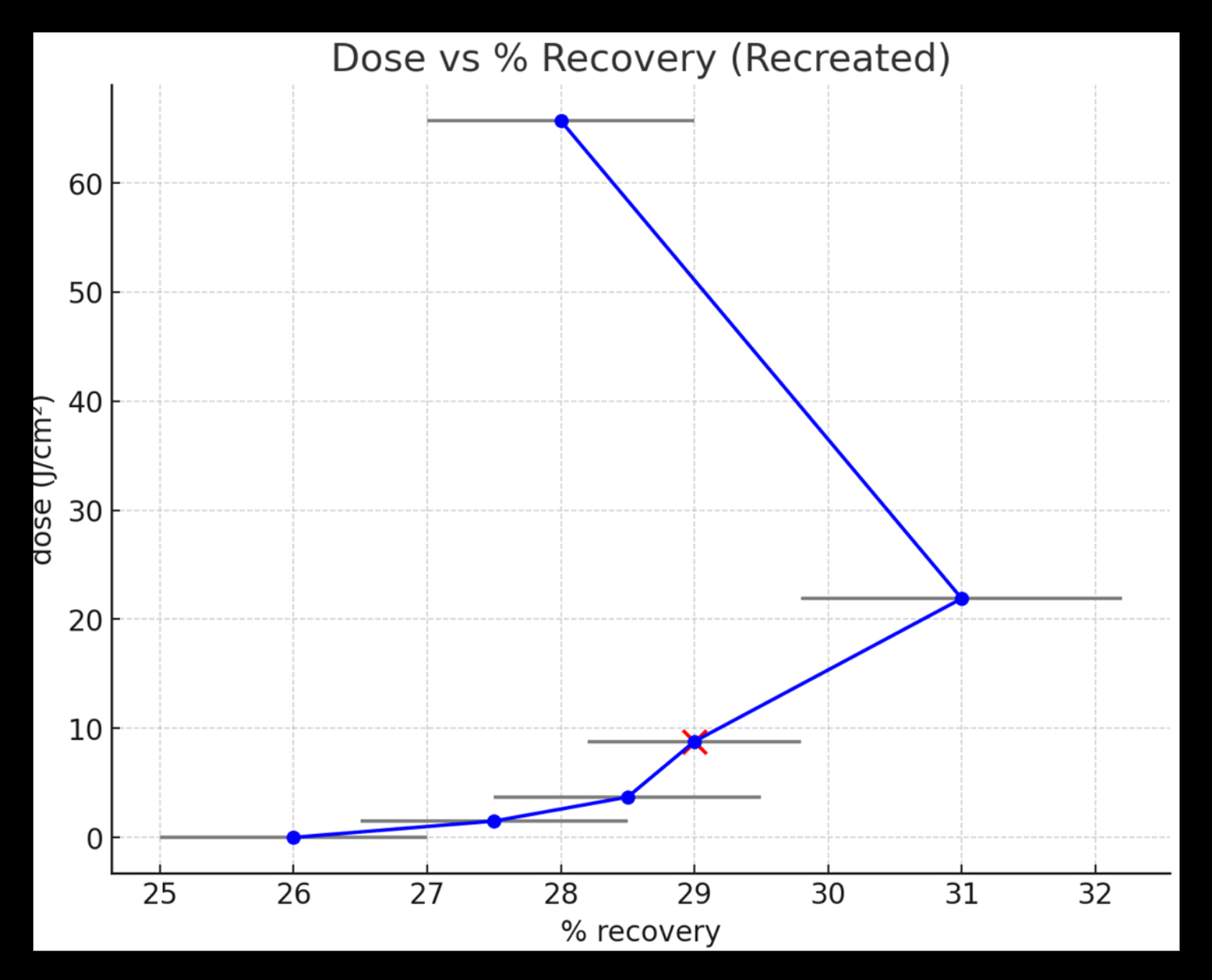
“It is our view LLLT is best described as two separate sets of parameters;
a. The medicine (irradiation parameters) b. The dose (time)” -Dr. Michael Hamblin
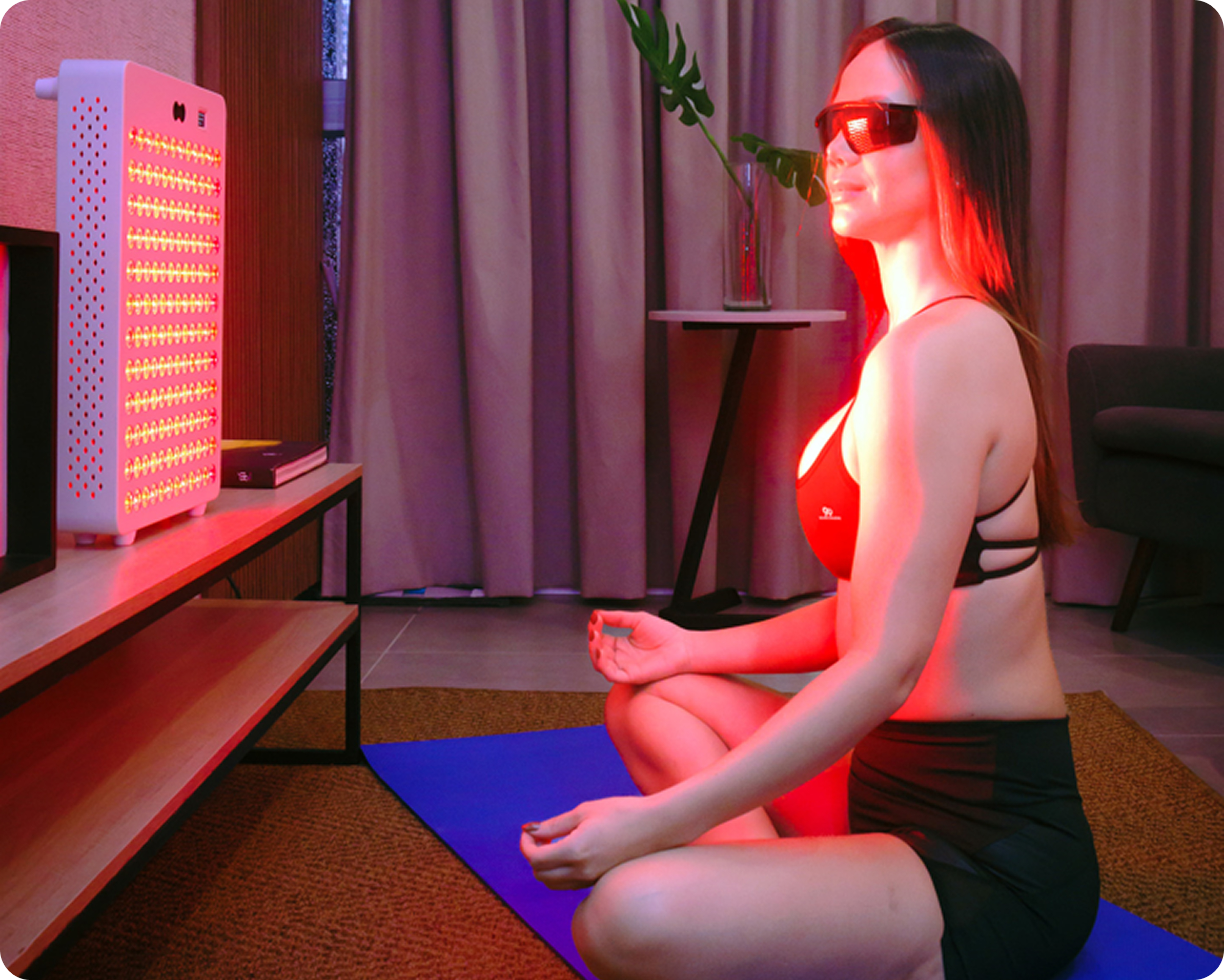
The Right Intensity, Not The Maximum Intensity
At Luxxe, we are dedicated to helping our customers find the minimum effective dose—the most responsible way to use red light therapy.
Our treatment protocols are guided by full-body studies and fall within the intensity ranges used in these studies, avoiding excessively high irradiance levels.
We believe in delivering the right amount of light, not the maximum amount, to ensure effective and safe results.
References & Clinical Foundations
SC;, S. M. (n.d.). Effects of near-infrared laser exposure in a cellular model of wound healing. Photodermatology, photoimmunology & photomedicine
does red light therapy really work?. YouTube. (2019, January 20).
Photobiomodulation: The role of light in preventing and potentially halting alzheimer’s disease. Mercola.com. (n.d.).
Huang, Y.-Y., Chen, A. C.-H., Carroll, J. D., & Hamblin, M. R. (2009b, September 1). Biphasic dose response in low level light therapy. Dose-response : a publication of International Hormesis Society.
https://www.ncbi.nlm.nih.gov/pmc/articles/PMC2790317/ And https://www.discoverymedicine.com/Nathan-S-Hart/2016/09/a-new-perspective-on-delivery-of-red-near-infrared-light-therapy-for-disorders-of-the-brain
Lanzafame RJ;Stadler I;Kurtz AF;Connelly R;Peter TA;Brondon P;Olson D; (n.d.). Reciprocity of exposure time and irradiance on energy density during photoradiation on wound healing in a murine pressure ulcer model. Lasers in surgery and medicine
D;, B. (n.d.). Near-infrared light and Skin: Why intensity matters. Current problems in dermatology.
Barolet, D., Christiaens, F., & Hamblin, M. R. (2016, February). Infrared and skin: Friend or foe. Journal of photochemistry and photobiology. B, Biology.
Laser phototherapy, clinical practice and scientific background: Lars Hode, jan tuner: 9789197647854: Amazon.com: Books. (n.d.).